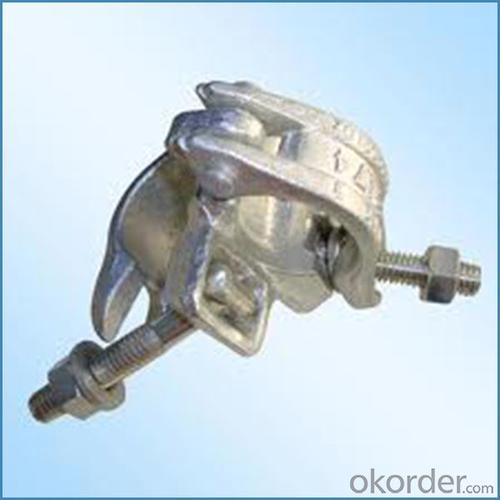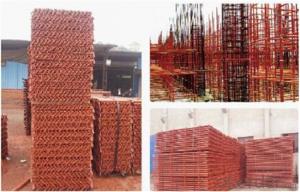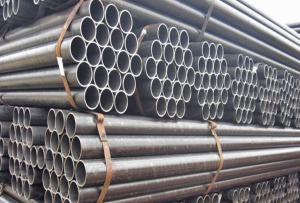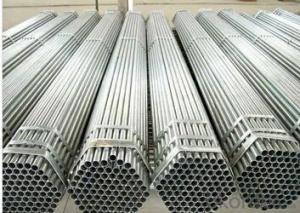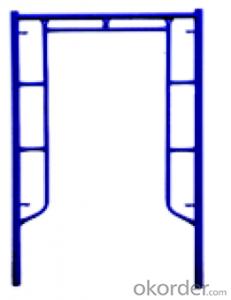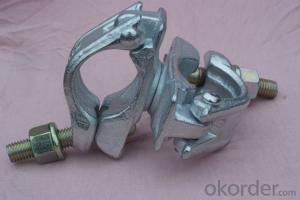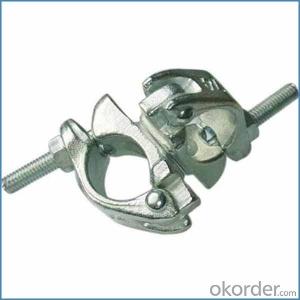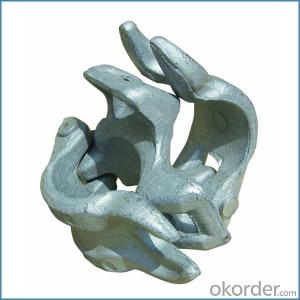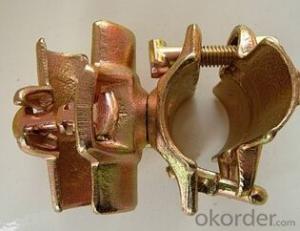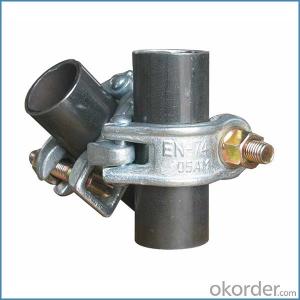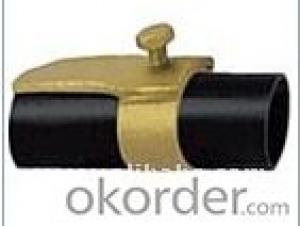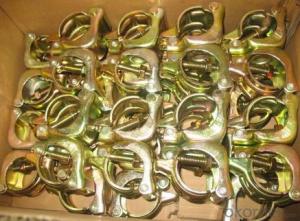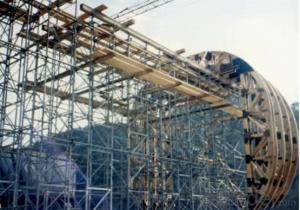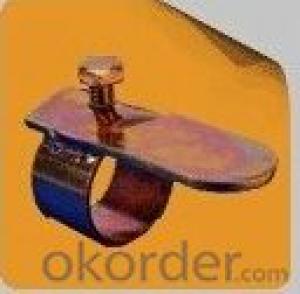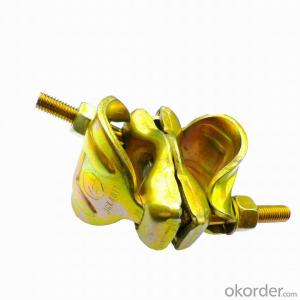Scaffolding Half Swivel Coupler British Type
- Loading Port:
- Tianjin
- Payment Terms:
- TT OR LC
- Min Order Qty:
- 100 kg
- Supply Capability:
- 100000 kg/month
OKorder Service Pledge
OKorder Financial Service
You Might Also Like
Scaffolding Half Swivel Coupler British Type
Description
1.The scaffolding coupler is always used to connect the steel pipe as scaffolding system.
2.The often used coupler is swivel coupler and righ angle coupler .
3.We can provide types of scaffolding coupler according to your requirement.
4.Couoler can fix the 48.3mm scaffolding steel pipe tightly and make the whole scaffolding system more steadily.
5.Material:Q235 steel
6.Overall Size:48.3mm*48.3mm
7.Surface Finish: Galvanized/ Painted
8.Standard:BS1139,EN74
9.Package:25pcs/bag
10.Manufactuering as per customer requirements
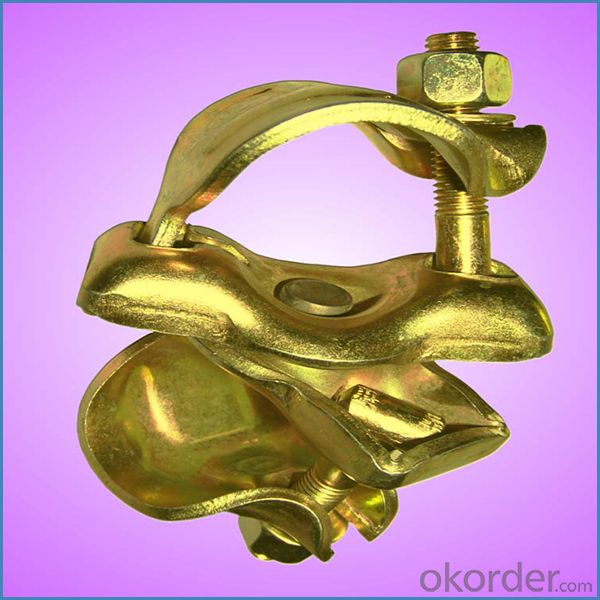
Feature
(1)Excellent Anti-Breaking—Cold Pressed Steel
(2)Outstanding Resistance Deformation
(3)Strong Anti-Dropping Ability
(4)Longtime USe
(5)Qualtity Guaranteed
(6)OEM Service
Photo
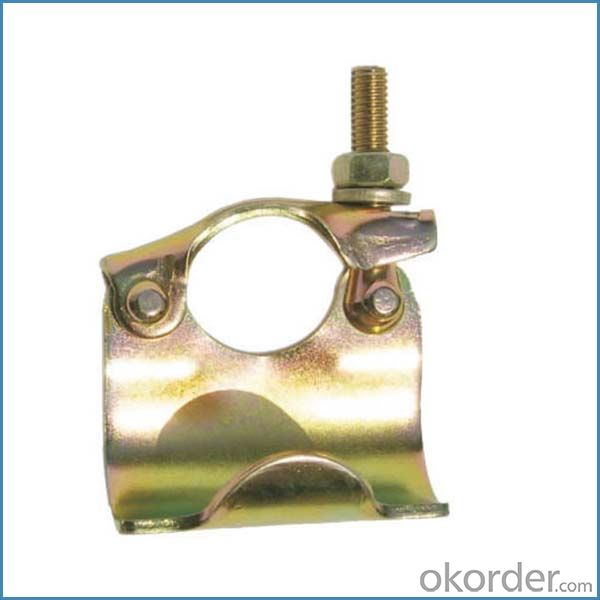
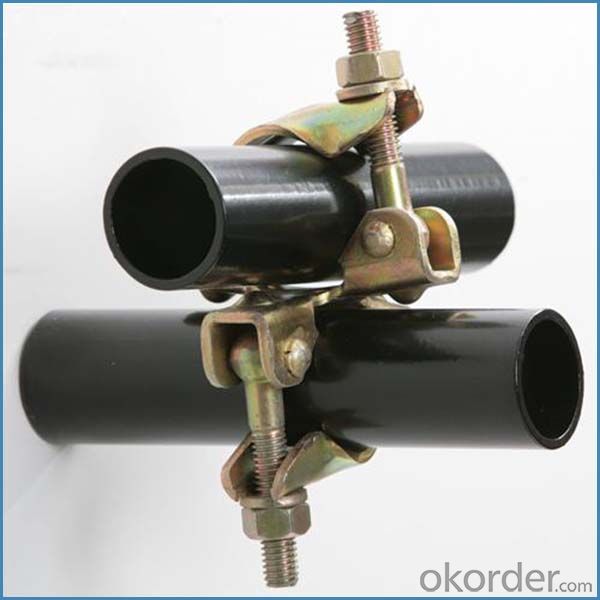
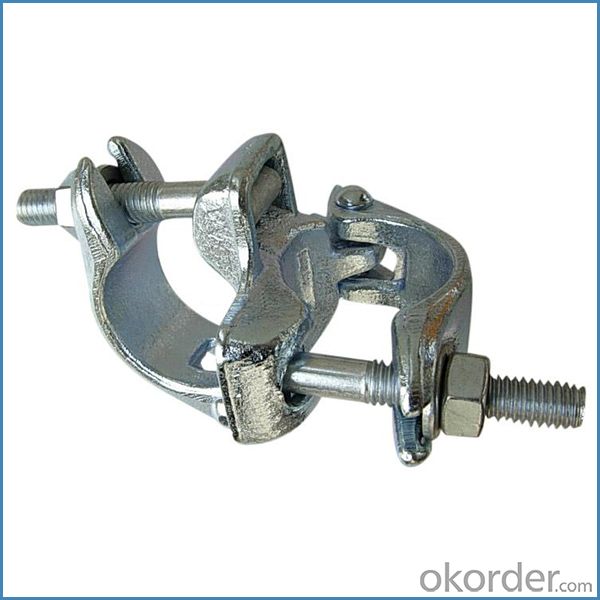
Parameter
| Material | Q235,345steel |
| Size | 48.3mm*48.3mm |
| Surface finish | Galvanized |
| Weight | 1.1kg around |
| Standard | BS1139,EN74 |
| Package | 25pcs/bag,steel pallet |
| Manufacture | As per customer requirement |
| Market | Africa, South America, the Middle East and Asia |
FAQ
Q: Are you a factory or trading company?
We are a state-owned corporation in China,dealing with various kinds of building materials.We have our holding subsidiaries.
Q: Where is your factory located? How can I visit there?
Our factory is located all around China.
Q: Can I get some samples?
Sample is free, customer only pay freight for the first time.
Q: Delivery?
10-30days. (5-15 containers)
Any question,feel free to contact us.
- Q: What are the potential risks or hazards associated with using steel tube couplers in scaffolding?
- Using steel tube couplers in scaffolding can be associated with several potential risks or hazards. One primary risk is the possibility of structural failure. If the couplers are not installed properly or if they exceed their recommended weight capacity, they may fail, leading to the collapse of the scaffolding structure. Such an event can cause severe injuries or even fatalities for workers or those nearby. Another risk is the potential for coupler slippage. If the couplers are not securely tightened, there is a chance that they may slip or become loose, resulting in instability in the scaffolding. This can cause workers to lose their balance and fall from heights, resulting in severe injuries. Improper use of steel tube couplers can also be hazardous for workers. If the couplers are not used in accordance with the manufacturer's instructions or industry standards, it can compromise the stability and integrity of the scaffolding system. This can create an unsafe working environment and increase the likelihood of accidents or injuries. Moreover, there is a risk of electrocution if steel tube couplers come into contact with live electrical wires or power sources. This can occur if the scaffolding is not adequately insulated or if workers accidentally make contact with electrical hazards while assembling or disassembling the scaffolding structure. Furthermore, the weight and bulkiness of steel tube couplers can make them difficult to handle and maneuver, especially when working at heights. If not handled properly, they can cause strain or injury to workers, leading to musculoskeletal disorders or accidents. To mitigate these risks, it is vital to ensure correct installation of all steel tube couplers, regular inspection for any signs of wear or damage, and adherence to specified weight capacities. Workers should receive training on the proper assembly and disassembly of scaffolding structures, as well as the safe handling of steel tube couplers. Regular safety inspections and maintenance should be conducted to ensure the integrity of the scaffolding system and minimize the risk of accidents or hazards.
- Q: In the scarlet letter, how did the scaffold relate to hester prynne?
- It symbolized death. She deserved to die because of her sin.
- Q: How do you calculate the required quantity of steel tube couplers for a scaffolding project?
- To calculate the required quantity of steel tube couplers for a scaffolding project, you would need to determine the number of connections between tubes. This can be done by counting the number of joints in the scaffolding design or by referring to the project's blueprint. Once you have the total number of connections, you can estimate the quantity of steel tube couplers needed by assuming one coupler for each connection. It's always recommended to add a few extra couplers for any unforeseen requirements or replacements.
- Q: My mom is making me choose between and industrial/ scaffold ear piercing or a six pack of colored contacts?
- I'd go with the piercing. Colored contacts for no reason look fake and are are really stupid I think.
- Q: Can steel tube couplers be used in scaffolding projects with curved structures?
- Indeed, scaffolding projects featuring curved structures can utilize steel tube couplers. These couplers exhibit exceptional versatility as they enable the connection of steel tubes at numerous angles, even accommodating curved structures. Their ability to establish a robust and reliable connection guarantees the stability and safety of the scaffolding system. Nevertheless, it is imperative to carefully assess the distinct demands of the curved structure and opt for an appropriate coupler size and type capable of accommodating the curvature. Meticulous planning and design play a pivotal role in ensuring the scaffolding system's resilience against the distinctive obstacles posed by curved structures.
- Q: Are steel tube couplers adjustable for different widths in scaffolding with limited access?
- No, steel tube couplers are not typically adjustable for different widths in scaffolding with limited access. They are designed to securely connect steel tubes of the same diameter and are not easily adjustable for varying widths.
- Q: What is the minimum spacing between the crossbar and the pole spacing of the scaffold?
- Send a mail to you, but whether you can give the best answer, huh, huh
- Q: How does the facade scaffolding connect with the main building?
- Color steel plate is divided into veneer, color steel composite board, floor board and so on
- Q: What is the typical weight of a steel tube coupler?
- The typical weight of a steel tube coupler can vary depending on its size and design. Generally, a steel tube coupler used in construction or scaffolding applications can weigh anywhere from a few ounces to several pounds. The weight is influenced by factors such as the material used, the diameter and thickness of the tube, and the specific purpose of the coupler. It is important to consult the manufacturer or supplier for accurate weight specifications that match the specific requirements of your intended application.
- Q: Are there any specific regulations or standards for the use of steel tube couplers in scaffolding?
- Yes, there are specific regulations and standards for the use of steel tube couplers in scaffolding. These regulations ensure the safety and structural integrity of scaffolding systems. Standards such as EN 74 and BS 1139 outline the requirements for coupler design, materials, load capacities, and installation procedures. Compliance with these standards is crucial to maintain the safety of workers and prevent accidents on construction sites.
Send your message to us
Scaffolding Half Swivel Coupler British Type
- Loading Port:
- Tianjin
- Payment Terms:
- TT OR LC
- Min Order Qty:
- 100 kg
- Supply Capability:
- 100000 kg/month
OKorder Service Pledge
OKorder Financial Service
Similar products
Hot products
Hot Searches
Related keywords




